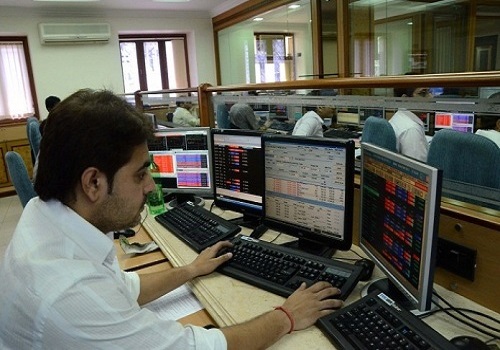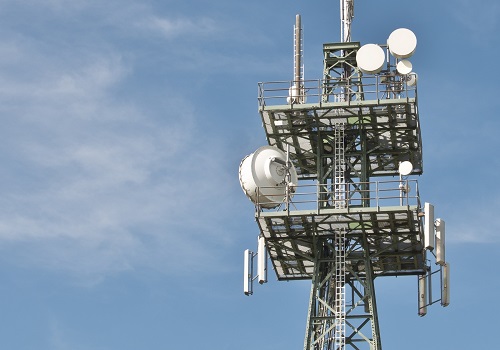Comrade Appliances coming with an IPO to raise upto Rs 12.30 crore

Follow us Now on Telegram ! Get daily 10 - 12 important updates on Business, Finance and Investment. Join our Telegram Channel
https://t.me/InvestmentGuruIndiacom
Download Telegram App before Joining the Channel
Comrade Appliances
- Comrade Appliances is coming out with a 100% book building; initial public offering (IPO) of 22,78,000 shares of Rs 10 each in a price band Rs 52-54 per equity share.
- The issue will open for subscription on May 31, 2023 and will close on June 05, 2023.
- The shares will be listed on SME Platform of BSE.
- The face value of the share is Rs 10 and is priced 5.20 times of its face value on the lower side and 5.40 times on the higher side.
- Book running lead manager to the issue is Gretex Corporate Services.
- Compliance Officer for the issue is Kiran Tilwani.
Profile of the company
The company is engaged in the process of manufacturing an extensive array of Air Coolers and Electric Geysers. It manufactures consumer durable goods and assemble a wide array of products and provide end-to-end product solutions. It serves under both original equipment manufacturer (OEM) and original design manufacturer (ODM) business models. Under the OEM model, it manufactures and supply products basis designs developed by its customers, who then further distribute these products under their own brands. Under the ODM model, in addition to manufacturing, it conceptualizes and designs the products which are then marketed to its customers’ prospective customers under their brands. Its current product portfolio of consumer goods includes (I) Air Coolers; (ii) Electric Geysers.
The company offers innovative solutions to its customers, which include leading international and national consumer brands. Its comprehensive solution suite includes global sourcing, fabrication of components and parts, captive manufacturing and assembly, quality testing, packaging and logistics support, which enables it to partner with leading consumer goods brands in India. Its key customers include leading brands in consumer durables. It has over 5 years of experience in manufacturing sector. Since inception, it has expanded its product portfolio, customer base and gained technological expertise in designing and manufacturing of its products. It has an experienced Board of Directors and management team. Its management, including key managerial personnel and Senior Management have expertise and experience in the consumer goods industry.
Proceed is being used for:
- Working Capital Requirements.
- General Corporate Purposes.
Industry overview
The Indian consumer durables market is broadly segregated into urban and rural markets and is attracting marketers from across the world. The sector comprises of a huge middle class, relatively large affluent class and a small economically disadvantaged class. The sector includes consumer electricals such as fans, kitchen and cooking appliances, lighting devices, as well as white goods such as washing machines, televisions, refrigerators, and air conditioners. Market share in the consumer durables industry is moving from the unorganised to the organised sector. According to estimates, 30% of the total market is still unorganised, which provides listed Indian players with a significant opportunity to further increase their market share going forward. Artificial intelligence and manufacturing automation will be important future trends as consumer awareness increases regarding technology advancements and their applications across multiple sectors. In order to increase production efficiency of various consumer durables, Industry 4.0 will stimulate investments in R&D, technology infrastructure, and manufacturing processes.
Indian appliances and consumer electronics industry stood at $ 9.84 billion in 2021, and is expected to more than double to reach Rs 1.48 lakh crore ($ 21.18 billion) by 2025. Electronics hardware production in the country stood at $ 63.39 billion in 2021. In FY21, the television production in India stood at $ 4.24 billion. The total active DTH subscriber base stood at 67.04 million in June 2022. As of 2021, the refrigerator, washing machines and air conditioner market in India were estimated at around $ 3.82 billion, $ 8.43 billion and $ 3.84 billion, respectively. The market size of air conditioners is expected to grow to 165 lakh units by 2025 from 65 lakh units in 2019, while refrigerators’ market size is expected to grow to 275 lakh units by 2025 from 145 lakh units in 2019. India’s smartphone shipments witnessed YoY growth of 11% in 2021, with 169 million units shipped. India’s smartphone market revenue crossed $ 38 billion in 2021 with a 27% YoY growth, with the leader being Xiaomi with a 24% shipment share.
Pros and strengths
R&D and product design capabilities leading to generation of ODM business: The company places strong emphasis on research and development to enhance its product range and improve its manufacturing processes, which has been a key pillar of its growth. It has developed strong product design capabilities, which allow it to provide customised solutions to its customers and service them more effectively and in a timely manner. Leveraging on the experience and knowledge derived from manufacturing its products, it is centre focusing on the research and development of electronics hardware designing, system architecture, mechanical design, component engineering and optics design and provide design enhancement and verification to its customers.
Strong relationships with a diverse top-tier customer base: The company has established and will continue to focus on strengthening its long-standing relationships with well-known customers across product verticals. It views these customers as its partners and seeks to provide them with quality end-to-end product solutions. Its customers are long term reputed players in the industry. Its relationships with them have enabled it to continuously develop, diversify and improve its product portfolio, plan its production in anticipation of demand from retail customers and ensure continuous focus on quality. Such long-term business relationships stem from its commitment to quality products and timely delivery of customers’ orders under tight delivery schedules and short production lead time. Its global customers typically implement stringent approval processes and quality audits checks in the selection of their suppliers, and its ability to be a key supplier and establish long term relationships with many of its customers demonstrates its ability to maintain customer stickiness and strong delivery capabilities.
Strategic Location of Manufacturing Unit: The company has setup its manufacturing unit in a very strategic area of Maharashtra. The basic raw material required for its manufacturing facility is plastic granules and it is easily available at the industrial areas. These manufacturing facilities are in Maharashtra and are near to various industrial areas. The company source raw materials from the Industrials area and the consumption of its finish products are also done in the same industrial area. The company has selected the contract manufacturing facilities and suppliers as there are strategically located. The strategic location of its plant has helped it in creating synergies as well as achieving economies of scale and operational efficiencies.
Risks and concerns
Do not have firm commitment agreements with customers: The company does not have firm commitment, long-term supply agreements with all its customers and instead rely on purchase orders to govern the volume and other terms of its sales of products. Many of the purchase orders it receive from its customers specify a price per unit and delivery schedule, and the quantities to be delivered are determined closer to the date of delivery. However, such orders may be amended or cancelled prior to finalisation, and should such an amendment or cancellation take place, it may adversely impact its production schedules and inventories. Further, where it has contracts with customers, such contracts do not bind its customers to provide it with a specific volume of business and can be terminated by its customers with or without cause, with little or no advance notice and without compensation. Consequently, there is no commitment on the part of the customer to continue to place new work orders with it and as a result, its sales from period to period may fluctuate significantly as a result of changes in its customers’ vendor preferences and it may be unable to procure repeat orders from its customers.
Face intense competition: The company competes on the basis of a number of factors, including execution, depth of product and service offerings, innovation, reputation and price. Its competitors may have advantages over it, including, but not limited to: Substantially greater financial resources; Longer operating history than in certain of its businesses; Greater brand recognition among consumers; Larger customer bases in and outside India; or more diversified operations which allow profits from certain operations to support others with lower profitability. These competitive pressures may affect its business, and its growth will largely depend on its ability to respond in an effective and timely manner to these competitive pressures.
Significant disruptions in information technology systems: The company may also face cyber threats such as: (i) Phishing and Trojans – targeting its customers, wherein fraudsters send unsolicited codes or mails to its customers seeking account sensitive information or to infect customer machines to search and attempt ex-filtration of account sensitive information; (ii) Hacking – wherein attackers seek to hack into its infrastructure with the primary intention of causing reputational damage to it by disrupting services; (iii) Data theft –This can be internal i.e. by someone who has access to data of the Company or external wherein unconnected cyber criminals may attempt to intrude into its network with the intention of stealing its data or information; and (iv) Advanced persistent threat – a network attack in which an unauthorized person gains access to its network and remains undetected for a long period of time In the event of a significant decline in the demand for its products, its business, results of operations and financial condition may be materially and adversely affected.
Outlook
Incorporated in 2017, Comrade Appliances is engaged in the process of manufacturing an extensive array of Air Coolers and Electric Geysers. The company manufactures consumer durable goods and assembles various products. They offer end-to-end product solutions to their customers. Comrade Appliances operate under both, Original Equipment Manufacturer (OEM) and Original Design Manufacturer (ODM) business models. Under the OEM model, they manufacture and supply products basis designs developed by their customers, later these products are sold under the customer's brand name. Under the ODM model, along with manufacturing, Comrade Appliances Limited also conceptualizes and designs the products which are then marketed to the customers' prospective customers under their brands. On the concern side, the company requires certain statutory and regulatory permits, licenses and approvals to operate its business. Though it has obtained all permits and licenses which are adequate to run its business, it cannot assure that there is no other statutory / regulatory requirement which it is required to comply with.
The issue has been offered in a price band of Rs 52-54 per equity share. The aggregate size of the offer is Rs 11.85 crore to Rs 12.30 crore based on lower and upper price band respectively. On performance front, the company’s total revenue decreased by Rs 273.85 lakh or 9.21% to Rs 2,699.43 lakh for the financial year 2022-23 from Rs 2,973.28 lakh for the financial year 2021-22. However, the company’s profit after tax increased by 321.89% to Rs 163.57 lakh for the financial year 2022-23 from Rs 38.77 lakh for the financial year 2021-22, reflecting a net increase of Rs 124.80 lakh. Meanwhile, the company aims to continue to maintain its focus on cost management, including its manufacturing capabilities to deliver growth as well as to achieve economies of scale. It will continue to seek to manage its supply chain costs through optimal inventory levels, economic orders and other measures. Economies of scale will also enable it to continuously improve its operational efficiencies.





















